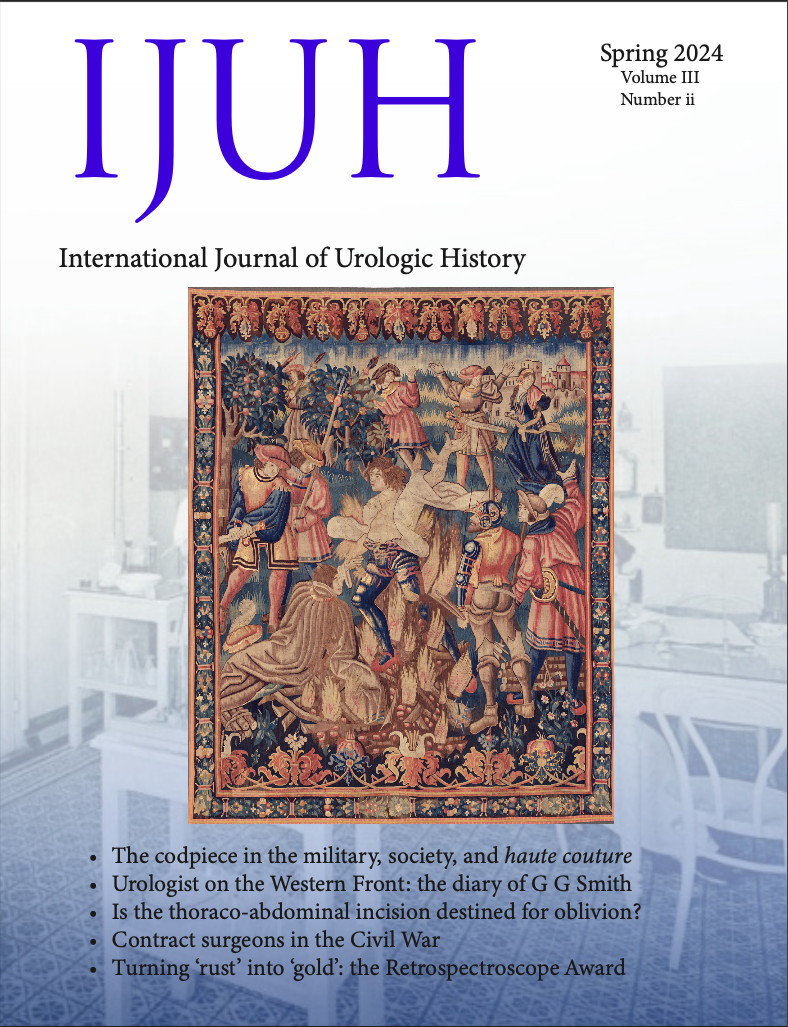IJUH
International Journal of Urologic History
Was President Andrew Jackson Overcharged? An Economic Evaluation of 19th Century Surgical Charges for Urologic Procedures and their Comparison to the Modern, RVU Era
Vincent J. Wong, Ashley Dixon, Sean Fullerton, Erin Grantham
First Published: July 1, 2021
DOI: 10.53101/IJUH71214
Download PDF
Abstract
Objectives
Surgical billing is as old as the profession of surgery but there is no published data that has characterized changes in surgical fees over history. Surgical remuneration has been better studied in the Medicare era of relative value units (RVUs)-based payment but what surgeons charged in the American 18th and 19th centuries is unknown. President Andrew Jackson underwent surgery by Dr. James Hall for a hydrocele in 1832 and was billed, and then paid, $30. Our initial objective was to determine the appropriateness of Dr. Hall’s surgical billing for that era. We then wished to determine historical trends in physician billing for similar urologic procedures in the 18th-19th centuries compared to the current RVU era, correcting for inflation.
Methods
Published fee tables from 18th and 19th century regional medical societies, prevailing charge data from the Center for Medicare Services (CMS) from 1967-1985, and published RVU values and conversion numbers from 1992-2020 (CMS) were used for analysis. To correct for inflation, we used a published consumer price index (CPI) for 1774-2020 indexed to 2020 US dollars. Mann-Whitney U-tests were used to compare unpaired differences without parametric assumptions.
Results
A total of 43 fee tables from 18 states from 1818-1898 were identified. The $30 charge to President Jackson for hydrocele surgery was similar to other states’ medical society recommendations of the early 1830s. Over the 19th century, there was an insignificant increase in the low-end fee pricing for hydrocele surgery of $18.4 +/- 17.9 in 1818-1840 versus $28.70 +/- 36.83 from 1880-1890 (p > .05), adjusting for inflation. Similarly, for initial male urinary catheterization, the mean surgical fee of $4.28 +/- 1.25 in 1818-1850 was similar to the $4.75 +/- 5.62 mean surgical fee in 1851-1900 (p>.05). Adjusting to 2020 dollars, however, reimbursement for urinary catheterization in 1818-1850, 1850-1900, 1975-1984, and 1992-2020 was $113.04 +/- 38.06, $131.20 +/- 169.53, $73.87 +/- 2.38, and $23.05 +/- 4.69, respectively (p<.01). of 11%.
Conclusions
Dr. James Hall, physician to 10 US Presidents, appropriately billed the 7th President for what would be now described as a hydrocele drainage and scarification. Fees for that procedure remained stable or decreased throughout the 19th century. Surgical fees for male urinary catheterization, however, decreased 82% from the 1840s to the 2020s, correcting for inflation.
Editor in Chief: John L. Phillips, MD
Journal Design: Akhil A. Saji, MD
DOI: 10.53101
US ISSN: 2769-2183
